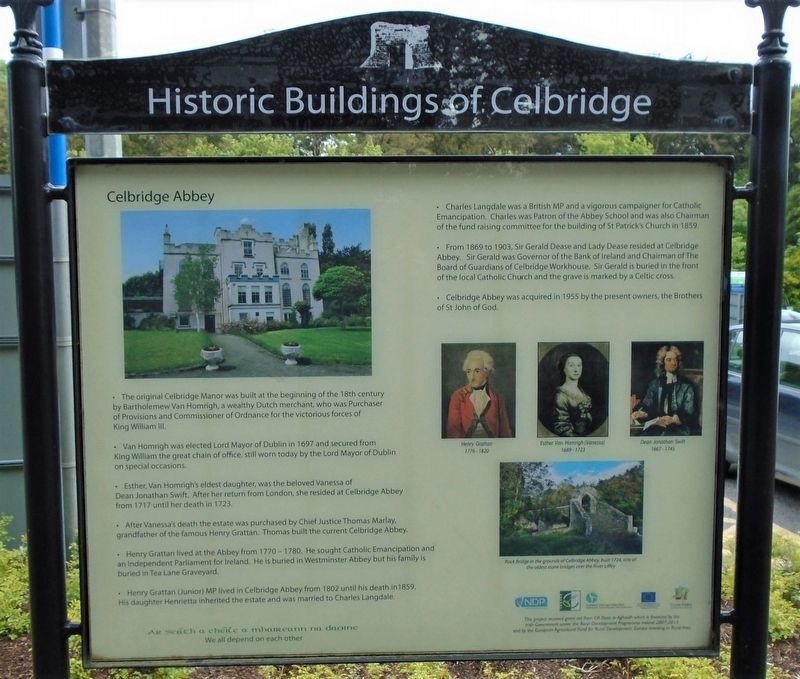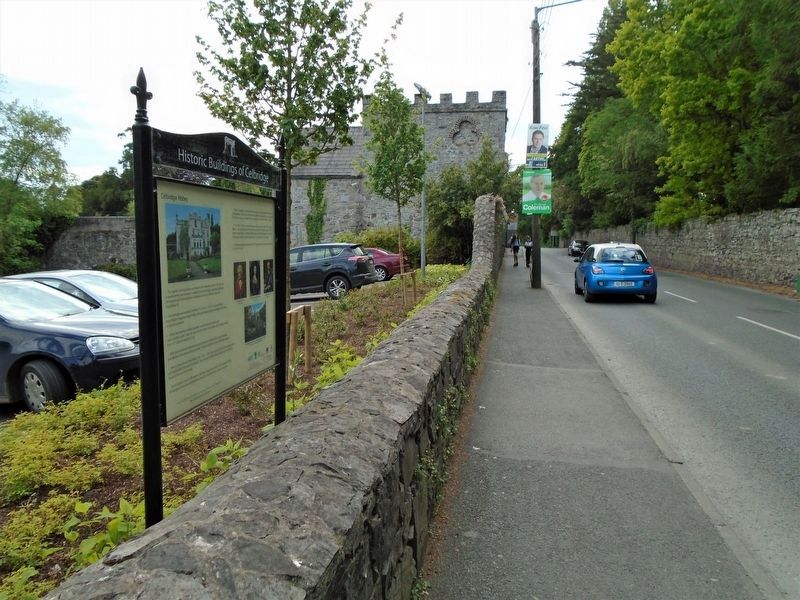Celbridge Abbey
Historic Buildings of Celbridge
• The original Celbridge Manor was built at the beginning of the 18th century by Bartholemew Van Homrigh, a wealthy Dutch merchant, who was Purchaser of Provisions and Commissioner of Ordnance for the victorious forces of King William III.
• Van Homrigh was elected Lord Mayor of Dublin in 1697 and secured from King William the great chain of office, still worn today by the Lord Mayor of Dublin on special occasions.
• Esther, Van Homrigh's eldest daughter, was the beloved Vanessa of Dean Jonathan Swift. After her return from London, she resided at Celbridge Abbey from 1717 until her death in 1723.
• After Vanessa's death the estate was purchased by Chief Justice Thomas Marlay, grandfather of the famous Henry Grattan. Thomas built the current Celbridge Abbey.
• Henry Grattan lived at the Abbey from 1770-1780. He sought Catholic Emancipation and an Independent Parliament for Ireland. He is buried in Westminster Abbey but his family is buried in Tea Lane Graveyard.
• Henry Grattan (Junior) MP lived in Celbridge Abbey from 1802 until his death in 1859. His daughter Henrietta inherited the estate and was married to Charles Langdale.
• Charles Langdale was a British MP and a vigorous campaigner for Catholic Emancipation. Charles was Patron of the Abbey School and was also Chairman of the fund raising committee
for the building of St Patrick's Church in 1859.• From 1869 to 1903, Sir Gerald Dease and Lady Dease resided at Celbridge Abbey. Sir Gerald was Governor of the Bank of Ireland and Chairman of The Board of Guardians of Celbridge Workhouse. Sir Gerald is buried in the front of the local Catholic Church and the grave is marked by a Celtic cross.
• Celbridge Abbey was acquired in 1955 by the present owners, the Brothers of St John of God.
[Illustration captions, at bottom right, read]
• Henry Grattan 1776-1820
• Esther Van Homrigh (Vanessa) 1689-1723
• Dean Jonathan Swift 1667-1745
• Rock Bridge in the grounds of Celbridge Abbey, built 1724,
one of the oldest stone bridges over the River Liffey
Erected by National Development Plan, Rural Development Programme Ireland, European Agricultural Fund for Rural Development, County Kildare, et al.
Topics. This historical marker is listed in this topic list: Notable Buildings. A significant historical year for this entry is 1697.
Location. 53° 20.217′ N, 6° 32.521′ W. Marker is in Celbridge, Leinster, in County Kildare. Marker is on Clane Road (Route R403) just west of Tea Lane, on the left when traveling west. The marker is at the entrance to the Celbridge Abbey Gardens car park. Touch for map. Marker is in this post office area: Celbridge, Leinster W23, Ireland. Touch for directions.
Other nearby markers. At least 8 other markers
Also see . . .
1. Celbridge Abbey at Wikipedia. (Submitted on December 3, 2019, by William Fischer, Jr. of Scranton, Pennsylvania.)
2. St Raphael’s Special School (current purpose for Celbridge Abbey). (Submitted on December 3, 2019, by William Fischer, Jr. of Scranton, Pennsylvania.)
Credits. This page was last revised on December 3, 2019. It was originally submitted on December 3, 2019, by William Fischer, Jr. of Scranton, Pennsylvania. This page has been viewed 343 times since then and 60 times this year. Photos: 1, 2. submitted on December 3, 2019, by William Fischer, Jr. of Scranton, Pennsylvania.

